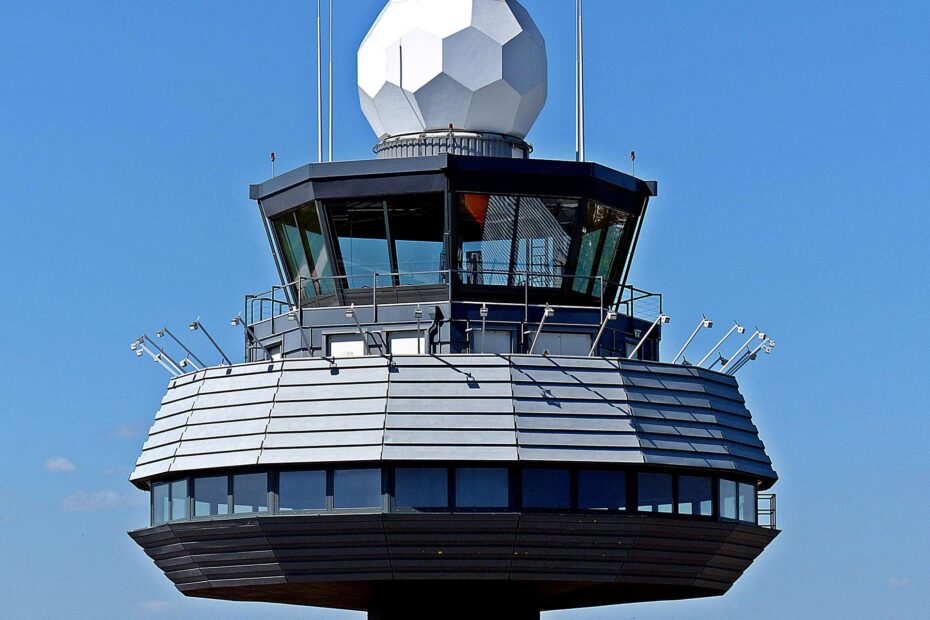There are several different paths to becoming an air traffic controller. A candidate must have either 3 years of progressively responsible work experience, a bachelor’s degree, a combination of postsecondary education and work experience totaling three years, or obtain a degree through an Federal Aviation Administration (FAA)-approved Air Traffic Collegiate Training Initiative (AT-CTI) program.
Additionally, to become an air traffic controller, candidates must
- be a U.S. citizen;
- pass a medical evaluation, including drug screening, and background checks;
- pass the FAA preemployment test, which includes a biographical assessment;
- pass the Air Traffic Controller Specialists Skills Assessment Battery (ATSA); and
- complete a training course at the FAA Academy (and start it before turning 31 years of age).
The biographical assessment, also known as a biodata test, is a behavioral consistency exam that evaluates a candidate’s personality fitness to become an air traffic controller. For more information, see the Office of Personnel Management (OPM) page on biodata tests. Applicants who pass both the ATSA and the biographical assessment are eligible to enroll in the FAA Academy.
Controllers also must pass a physical exam each year and a job performance exam twice per year. In addition, they must pass periodic drug screenings.
Some learn their skills and become air traffic controllers while in the military.
Education
Candidates who want to become air traffic controllers typically need an associate’s or a bachelor’s degree from an AT-CTI program. Other candidates must have 3 years of progressively responsible work experience, have completed 4 years of college, or have a combination of both.
The FAA sets guidelines for schools that offer the AT-CTI program. AT-CTI schools offer 2- or 4-year degrees that are designed to prepare students for a career in air traffic control. The curriculum is not standardized, but courses focus on subjects that are fundamental to aviation. Topics include aviation weather, airspace, clearances, reading charts, federal regulations, and related topics.
Training
Most newly hired air traffic controllers are trained at the FAA Academy, located in Oklahoma City, OK. The length of training varies with the applicant’s background. Applicants must be hired by their 31st birthday.
After graduating from the Academy, trainees are assigned to an air traffic control facility as developmental controllers, until they complete all requirements for becoming a certified air traffic controller. Developmental controllers begin their careers by supplying pilots with basic flight data and airport information. They then advance to positions within the control room that have more responsibility.
As the developmental controllers master various duties, they earn increases in pay and advance in their training. Those with previous controller experience may take less time to become fully certified.
There are opportunities for a controller to switch from one position to another, provided that additional training is completed. For example, a controller may transfer from an en route position to an airport tower position with additional Academy training. Within both of these positions, controllers can transfer to jobs at different locations or advance to supervisory positions.
Work Experience in a Related Occupation
Applicants may need to have up to 3 years of progressively responsible generalized work experience in any occupation, or a combination of work experience and college education. More work experience is necessary to substitute for less postsecondary education.
Licenses, Certifications, and Registrations
All air traffic controllers must hold an Air Traffic Control Tower Operator Certificate or be appropriately qualified and supervised as stated in Title 14 of the Code of Federal Regulations, Part 65. They must be at least 18 years old, fluent in English, and comply with all knowledge and skill requirements.
Important Qualities
Communication skills. Air traffic controllers must be able to give clear, concise instructions, listen carefully to pilots’ requests, and respond by speaking clearly in English.
Concentration skills. Controllers must be able to concentrate in a room where multiple conversations occur at once. For example, in a large airport tower, several controllers may be speaking with several pilots at the same time.
Decisionmaking skills. Controllers must make quick decisions. For example, when a pilot requests a change of altitude to avoid poor weather, the controller must respond quickly so that the plane can operate safely.
Math skills. Controllers must be able to do arithmetic accurately and quickly. They often need to compute speeds, times, and distances, and they recommend heading and altitude changes.
Organizational skills. Controllers must be able to coordinate the actions of multiple flights. Controllers need to be able to prioritize tasks, because they may be required to guide several pilots at the same time.
Problem-solving skills. Controllers must be able to understand complex situations, such as the impact of changing weather patterns on a plane’s flight path. Controllers must be able to review important information and provide pilots with appropriate solutions.
